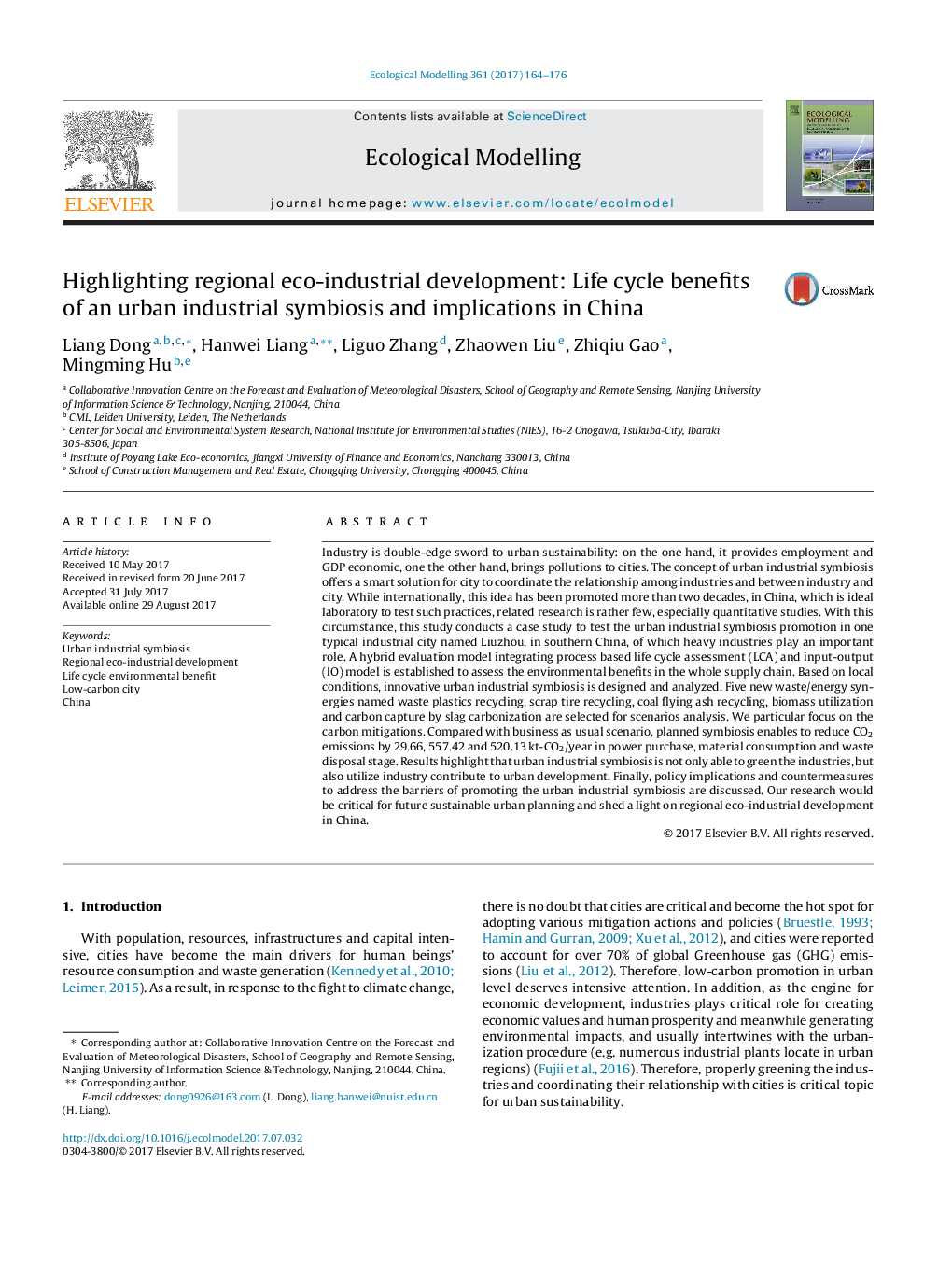| Article ID | Journal | Published Year | Pages | File Type |
|---|---|---|---|---|
| 5742003 | Ecological Modelling | 2017 | 13 Pages |
â¢Urban industrial symbiosis as system innovation was proposed analyzed.â¢A hybrid LCA approach was established to evaluate environmental impacts.â¢Established model was tested with urban industrial symbiosis implication in China.â¢Critical policy implications were discussed for promotion of urban industrial symbiosis.
Industry is double-edge sword to urban sustainability: on the one hand, it provides employment and GDP economic, one the other hand, brings pollutions to cities. The concept of urban industrial symbiosis offers a smart solution for city to coordinate the relationship among industries and between industry and city. While internationally, this idea has been promoted more than two decades, in China, which is ideal laboratory to test such practices, related research is rather few, especially quantitative studies. With this circumstance, this study conducts a case study to test the urban industrial symbiosis promotion in one typical industrial city named Liuzhou, in southern China, of which heavy industries play an important role. A hybrid evaluation model integrating process based life cycle assessment (LCA) and input-output (IO) model is established to assess the environmental benefits in the whole supply chain. Based on local conditions, innovative urban industrial symbiosis is designed and analyzed. Five new waste/energy synergies named waste plastics recycling, scrap tire recycling, coal flying ash recycling, biomass utilization and carbon capture by slag carbonization are selected for scenarios analysis. We particular focus on the carbon mitigations. Compared with business as usual scenario, planned symbiosis enables to reduce CO2 emissions by 29.66, 557.42 and 520.13Â kt-CO2/year in power purchase, material consumption and waste disposal stage. Results highlight that urban industrial symbiosis is not only able to green the industries, but also utilize industry contribute to urban development. Finally, policy implications and countermeasures to address the barriers of promoting the urban industrial symbiosis are discussed. Our research would be critical for future sustainable urban planning and shed a light on regional eco-industrial development in China.
